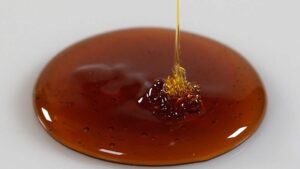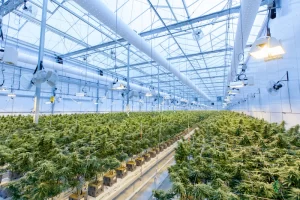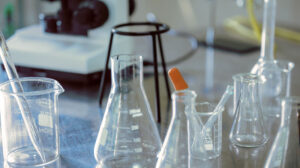At the heart of good laboratory techniques is glassware cleaning and sanitization, because to achieve the most precise readings, sources of error must be taken out of the equation. The best criterion for cleanliness is to be free of physical and chemical substances, which means uniformly coating glassware in distilled water before storing it on a shelf.
In a similar fashion, caution should be exercised when wiping down delicate instruments so as not to interfere with the expected results. Grease lining the inside of glassware could change the volume of liquid adhering to the interior wall. In return, this has an effect on the volume of liquid transferred and makes it difficult to adjust the quantity of reagent being used.
Glassware Cleaning: The General Procedure for Washing and Cleaning Glassware
It’s important that you wash glassware at the end of every experiment in the lab. Otherwise, it becomes very difficult to remove the dried residue and may require scrubbing with harsher chemicals that could scratch or damage the container. Most glassware is easy to clean once you rinse it with solvent and distilled water, although deionized water is better for removing traces of reactive substances.
When attempting to disinfect labware, be sure to identify the properties of a solution such as the chemical formula of organic solvents and their post-reaction products. Certain cleaning agents are only effective against a handful of substances, therefore you should mark off solutions by their solubility in water.
Water-soluble solutions (e.g., Sugar and salt solutions)
Water-insoluble solutions (e.g., Hydrocarbons, hexane, chlorobenzene)
Strong acids and strong bases (e.g., HCl, H2SO4, NaOH, KOH)
Weak acids and weak bases (e.g., Acetic Acid, NH4OH, low molarities)
A wash bottle is recommended for cleaning hard-to-reach places on glass funnels, tubing, and Erlenmeyer flasks. To remove organic reagents, squeeze some ethanol or acetone in the container and mix it by swirling with deionized water. For acidic or basic solutions, you can rinse them with distilled water under the fume hood to dissipate the odor.
Cleaning Equipment and Labware for Taking Measurements
Good laboratory techniques must be performed in a controlled environment where clean or sterile glassware is used to measure the volume of liquids for varying chemical compositions.
To get rid of contaminants, gently scrub the inside of glassware with a cleaning brush that fits the container size, then wash it down with warm, soapy water.
On pipettes and burets, rinse them several times to let the water drain from the tip. Add some acetone or ethanol to remove an ether solvent and speed up the drying process. For volumetric flasks, scrub it with a brush in soapy water and rinse multiple times with the distilled water. Any test tubes and culture bottles must be emptied and sterilized before cleaning those with water and detergent.
Because water easily affects the concentration of a heterogenous mixture, wet glassware can pose a problem for experiments that involve calculating the volume of diluted solutes. In other words, use only dry glassware in a lab project and leave washed items to dry overnight in a stockroom.
If the labware is covered in grease, wipe it down with a bit of hexane or acetone. Don’t wipe the glass too hard with a towel or it may introduce fibers or impurities into a new solution.
When should you sterilize glassware in the lab?
While conducting studies on microbials, a sterile environment is needed to process equipment and comply with SOPs in cleanroom facilities. For that reason, traces of chemicals cannot be present on the testing appliances, and all containers must be washed carefully to eliminate remaining chemicals prior to resuming a new procedure.
In biology and cell laboratories, batches of live cultures are frequently handled and transported, exposing them to potential contaminants in the air or on nearby surfaces. For example, to ensure the contents have no impurities, DNA, RNA, and proteins can be preserved by rinsing test tubes, loading wells, and non-disposable kits after each sample extraction or analysis.
Glassware is sterilized by heating it in an autoclave, a step that goes together with the preparation of agarose or nutrient broth.
Types of Glassware Cleaning Agents
Whenever you try to clean off chemical hazards, always wear gloves and PPE to avoid touching the chemicals directly. If the glass interior appears oily, in another color, or an odor persists, coagulated organic material could be stuck to it. A stronger cleaning agent is needed to break down the remaining precipitate in that case.
There are many types of cleaning solutions that are commercially available:
- Alconox detergent – an anionic powder for ultrasonic and manual cleaning of tough stains.
- Electroclean – a heated alkaline solution powered by a current for removing grease and oil from surfaces.
- Degreaser – household and industrial grease removers such as baking soda and vinegar.
- Liquinox – a concentrated detergent for replacing strong acids and hazardous solvents
A general-purpose cleaning chemical is usually enough to wash off any precipitate. For a particularly stubborn stain, you could expose it to chromic acid, nitric acid, or sulfuric acid in smaller amounts to dampen its corrosive properties. For glassware holding culture media, dispose of the contents then wash in boiling water and soap to sterilize them afterward.
The labware will become clear and transparent after applying a cleaning agent, though it should be handled with care to prevent breakage during the wash.




